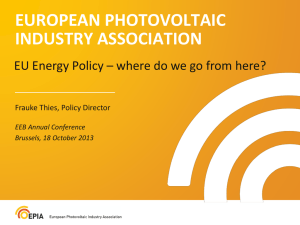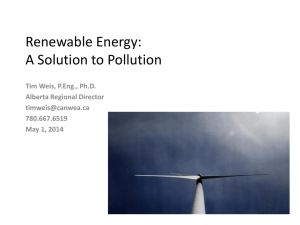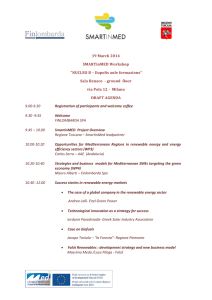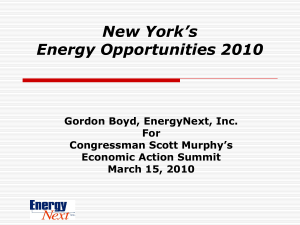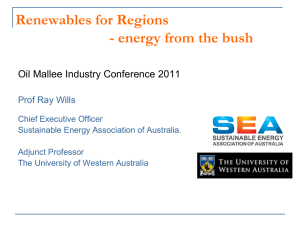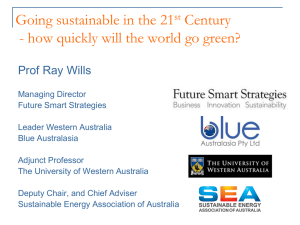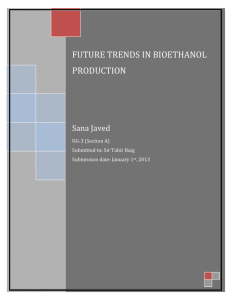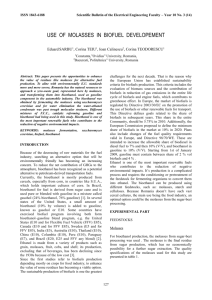Quantification of Renewable Raw Materials Use in the EU
advertisement
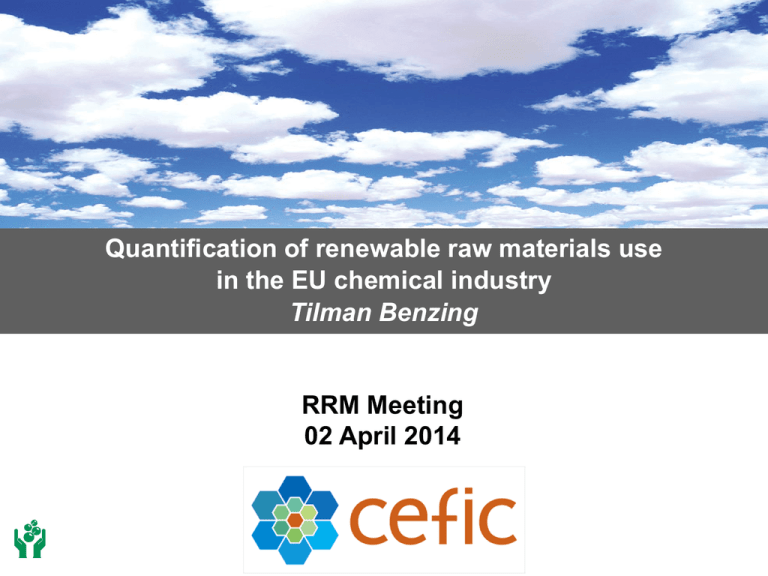
Quantification of renewable raw materials use in the EU chemical industry Tilman Benzing RRM Meeting 02 April 2014 Motivation for raw materials quantification • Know the status of bio-based chemical production - as baseline information - to monitor future developments • Aggregate chemical production is difficult to quantify - Value: possible - Volume: impossible! • Scope and methodology - Raw materials entering the chemical industry - Limitation to organic materials and material use 2 Scope and methodology = not taken into account Chem. industry Energy use Customer industries (e.g. Packaging, Construction, Automotive, Cleaning, Pharmaceutical) Chemical industry (NACE 20) Plastics, Fine and specialty chemicals Raw Materials Base Organic base chemicals Inorganic base chemicals Coal tar Chemical Value Chain Simplified; proportions not to scale! Bioethanol = internal energy use in crackers Naphtha, condensates, LPG, gasoil Coal Mining Natural gas production Refineries Vegetable oils, Animal fats, Cellulose, Sugar, Starch, Bioethanol, Natural Rubber, Glycerol, and others Bio-based raw materials Salt, phosphate, flurospar, lithium, potassium, preciuos metals, and many others Inorganics mining Raw materials use: Draft results and data sources Volume in 1,000 tonnes Mineral Oil derivatives (refinery products) Natural Gas EU 28 "gross" 84,380 19,200 EU 28 "net" Data sources 61,210 APPE (Association of Petrochemicals Producers in Europe) 19,200 Eurostat Coal Renewables total 1,340 8,560 1,340 Eurostat 8,560 - Vegetable Oils 1,570 1,570 FEDIOL (European Vegetable Oil and Proteinmeal Industry Federation) 500 APAG (European Oleochemicals and Allied Products Group) 890 FAOSTAT, CIRFS (European man-made fiber industry organization) 1,560 Ecosys/FNR (German renewable raw materials agency) and estimates 590 European Commission Animal Fats 500 Chemical Pulp 890 Starch and Sugar Bioethanol (industr. use) 1,560 590 Bioethanol (ETBE) 1,000 1,000 EFOA (European Fuel Oxygenates Association) Natural Rubber 1,240 1,240 IRSG (International Rubber Study Group) Glycerol Others Total organic 470 740 113,480 470 Eurostat and estimates 740 Eurostat and estimates 90,310 - Organic raw material use Draft results volume Volume in 1.000 t – material (feedstock) use only, EU chemical industry, 2011 61,210 19,200 8,500 1,340 Mineral Oil derivatives Natural Gas Coal Renewables 5 Organic raw material use Draft results shares Shares in total organic raw materials – material (feedstock) use only, EU chemical industry, 2011 9% 1% Mineral Oil derivatives Natural Gas 21% Coal 68% Renewables 6 Renewables volume: Detailed breakdown (draft) Renewables volume in 1.000 tonnes, EU chemical industry, 2011 1,560 890 1,000 ETBE 1,570 1,240 740 500 590 470 7 Renewables shares: Detailed breakdown (draft) Renewables shares in total renewables, EU chemical industry, 2011 Vegetable Oil 9% 18% 5% Animal Fat Chemical Pulp 6% 14% Bioethanol total: 8.5 mill. tonnes/a 10% (for ETBE) Starch and Sugar Bioethanol for ETBE Natural Rubber 12% Glycerol 7% 18% Others Vegetable waxes, natural resins, tanning agents, proteins, medicinal plants 8 Limitations • Methodology: Definition of scope influences the results • Varying data quality: Different sources, estimates • The results are an important step towards a baseline for monitoring the future development of bio-based chemical production, but should not be seen as complete and as a definitive baseline. • Changes in scope and methodology as well as changes in data sources and estimates could lead to structural changes in the data, limiting the validity of future monitoring. These uncertainties require careful interpretation of the resulting data, especially when analyzing future developments. 9 Way forward • Regular updates, beginning with 2012 data • Regular screening of data sources to improve data quality: - substitution of sources with better ones - replacement of estimates by systematic and regular surveys, where possible • Possible adaptation of methodology in light of new information • Possible application as template for member states to be discussed with national federations, taking into account existing approaches and methodologies. Thank you for your attention! 10
